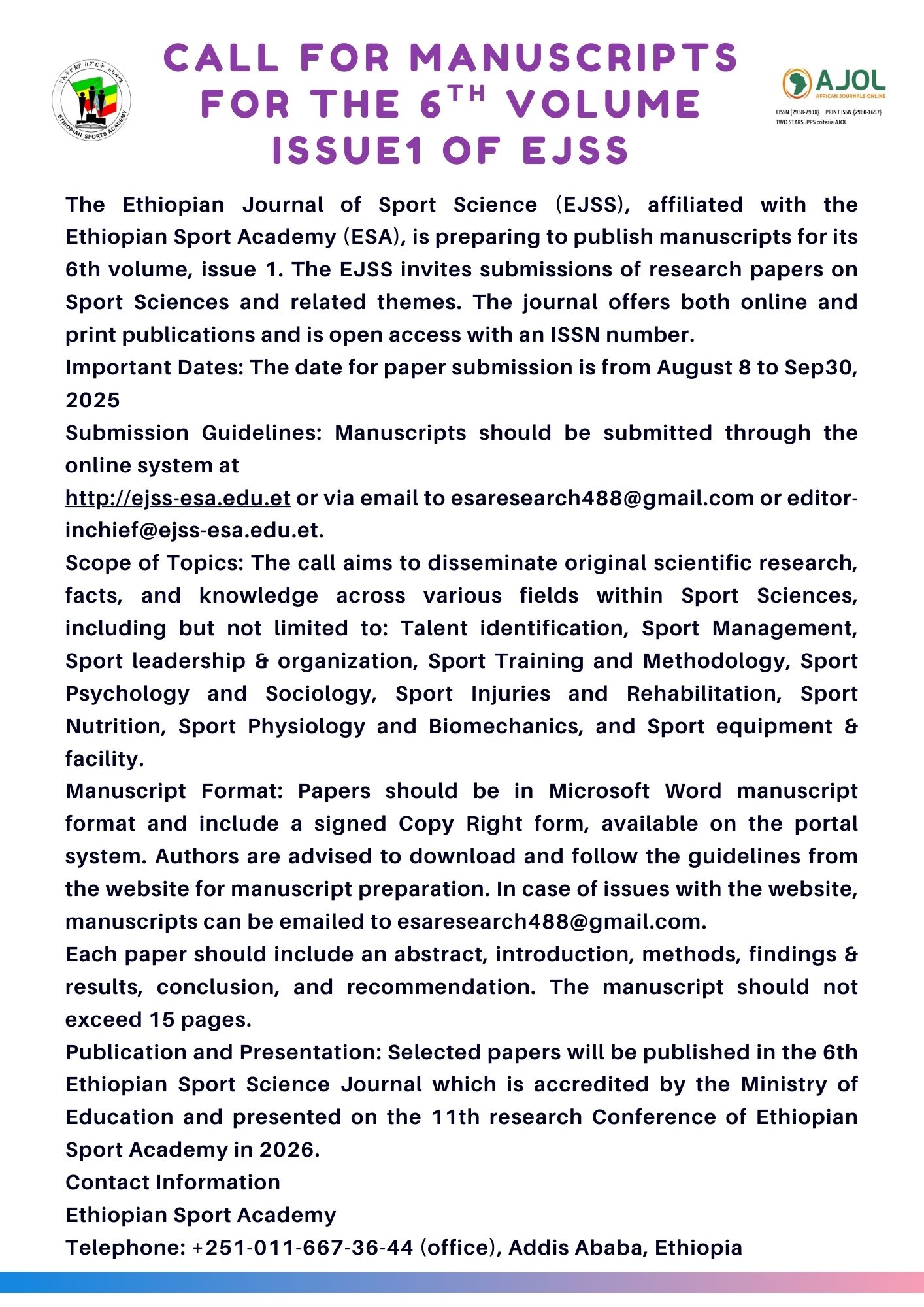Perceived Weekly Training Load and Soccer Specific Speed Performance
Keywords:
Perceived, , repeated sprinting ability, and Training loadAbstract
The study was done with an ultimate of unveiling how and to what extent perceived weekly training load (TL) correlate with linear sprinting speed, repeated sprinting ability (RSA) and Change-of-direction-speed (CODS). To this end, a correlational research design using bivariate and partial correlation was employed. Competitive soccer players (n=88) who were playing at the national league level (the third league level in Ethiopia) participated in the study. Internal load was measured using the rate of perceived exertion (RPE) scale for about five consecutive weeks. For this, each session load was calculated by multiplying the scale rated (the number which indicate the level of exertion) by the duration of the session. The specific finesses in question in the study as Linear speed and change-of-direction-speed was measured using 40m dash and 9-3-6-3-9 tests respectively. The 6*35m RSA testing method was used to measure the players` ability to produce the best possible sprinting over consecutive sprints with only a brief recovery time between the sprints. This was done for about five consecutive weeks. Thus, for each variable there were 440 observations. The study showed that linear sprinting speed had a small zero-order correlation (r (440) = -.292, p<.001) and non-significant partial correlation with TL. However, CODS has a moderate bivariate correlation (r (440) = -.350, p<.001) and a significant partial correlation (r (436) = -.162, p=.001). RSA average time had a significant moderate correlation with perceived training load (r (440) = -.317, p<.001. As that of linear sprinting speed, RSA has no significant partial correlation with perceived TL. Thus, it is concluded that, perceived TL can have a positive relationship with soccer specific speed performance parameters, though the relationship is highly dependent on moderating factors.





